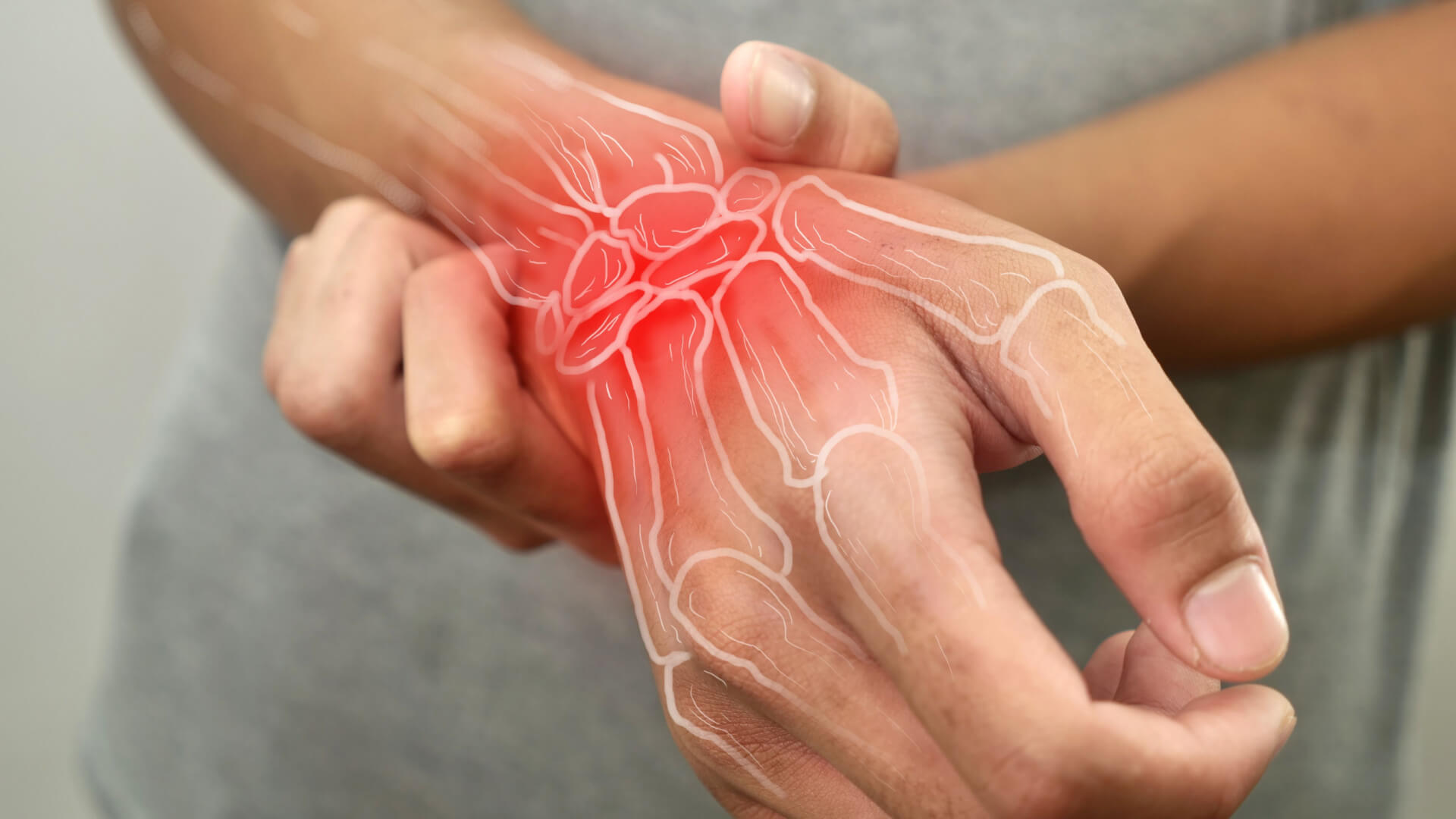February 20, 2024
Uncovering the Joints: Common Causes of Arthritis
Arthritis is a blanket term that covers over a hundred different musculoskeletal conditions. No two examples are exactly the same, and there are many underlying causes to consider. We need to create universal treatment methods capable of addressing the numerous causes of arthritis. That’s what the healing devices at Gladiator Therapeutics aim to do.
What is Arthritis?
Arthritis is the inflammation of one or more joints, causing pain, swelling, and stiffness that can worsen with age. It can affect anyone, regardless of age, though it is less common the younger you are. It’s so commonplace that it is a leading cause of disability. One of the dangerous aspects of it is that the symptoms can develop gradually or suddenly and may be mild or severe.
Joints are the areas where two bones meet. Different types of arthritis affect these joints in different ways. Arthritis is often chronic and demands long-term management, which is why understanding its causes is so important to providing effective care.
Common Causes of Arthritis
Arthritis can be as diverse as the patients it afflicts. Here are some of the common causes of arthritis.
1. Genetic Factors
Genetics plays a significant role in what type of arthritis you may develop. Specific genes can make you more susceptible to environmental factors that may trigger the disease. Moreover, gene mutations can make you more likely to develop autoimmune conditions, which often underlie various types of arthritis.
2. Age and Wear and Tear
As we age, our joint cartilage breaks down, and the lubricating synovial fluid keeping our joints from rubbing against each other loses its effectiveness. This can lead to increased friction between the joints, causing pain and swelling.
3. Injury and Trauma
Injuries – such as fractures, ligament tears, and dislocations – can damage the cartilage in your joints, leading to arthritis. Even mild – yet poorly treated – injuries can escalate over time, impacting the health and function of your joint.
4. Infections
Infections caused by viruses and bacteria can lead to forms of arthritis known as infectious arthritis or septic arthritis. These conditions require prompt treatment of the underlying infection to avoid severe damage to the joints. This is quite different from other types in that it’s fast-acting and requires immediate treatment to remove and stop.
5. Autoimmune Disorders
Rheumatoid arthritis (RA) and certain other forms of arthritis are the product of the body’s immune system mistakenly attacking its tissues. In the case of RA, this immune response specifically targets the lining of the joints, leading to inflammation. There are specific treatments specifically for arthritis caused by a flaw in your immune system.
Risk Factors That Increase the Chances of Arthritis
Several risk factors can increase the likelihood of developing arthritis, and recognizing them can be a key part of prevention strategies.
1. Obesity
Carrying excess weight puts more pressure on your joints, particularly those in the spine, hips, and knees.
2. Joint Injuries
A history of joint injuries can greatly increase the risk of developing arthritis in those affected areas.
3. Occupation
Certain occupations or jobs that require repetitive knee bending and squatting, carrying heavy loads, or standing for long periods can lead to osteoarthritis of the knee, hip degeneration, and spine-related issues.
4. Certain Infections
Specific infections, such as Lyme disease, can lead to forms of chronic arthritis if not treated effectively.
Prevention and Management of Arthritis
The different factors for arthritis mean that there needs to be a multi-pronged approach to management, which includes both preventive measures and targeted interventions.
1. Exercise and Physical Activity
Regular movement and exercises that strengthen the muscles around the joint can help reduce pain and manage the symptoms of arthritis.
2. Weight Management
Maintaining a healthy weight can reduce the risk of developing arthritis in weight-bearing joints or can help alleviate the symptoms in those already suffering from the condition.
3. Healthy Diet
A balanced diet rich in nutrients can contribute to your overall health and potentially slow down the progression of arthritis.
4. Medications and Treatments
From pain relievers to biological response modifiers, various medications aim to manage the symptoms and, in some cases, the progression of arthritis.
5. Healing Devices
New technologies, such as Far Infrared therapy devices from Gladiator Therapeutics, have shown promise in alleviating the symptoms of arthritis by penetrating the affected areas, promoting tissue repair, and providing pain relief without the side effects of medication.
Gladiator Therapeutics’ Approach to Arthritis
Gladiator Therapeutics provides those suffering from arthritis with non-invasive, wearer-friendly healing devices that employ the power of Far Infrared (FIR) technology. Our products aim to ease the symptoms and improve the quality of life for those grappling with the challenges of arthritis.
Contact Gladiator Therapeutics For Healing Devices to Relieve Your Arthritis Pain
The most common causes of arthritis are as varied as the condition itself. But by understanding its causes, we can better understand how to prevent, recognize, and manage it. For more information and to move towards arthritis relief, visit Gladiator Therapeutics to check out our products or contact us.

